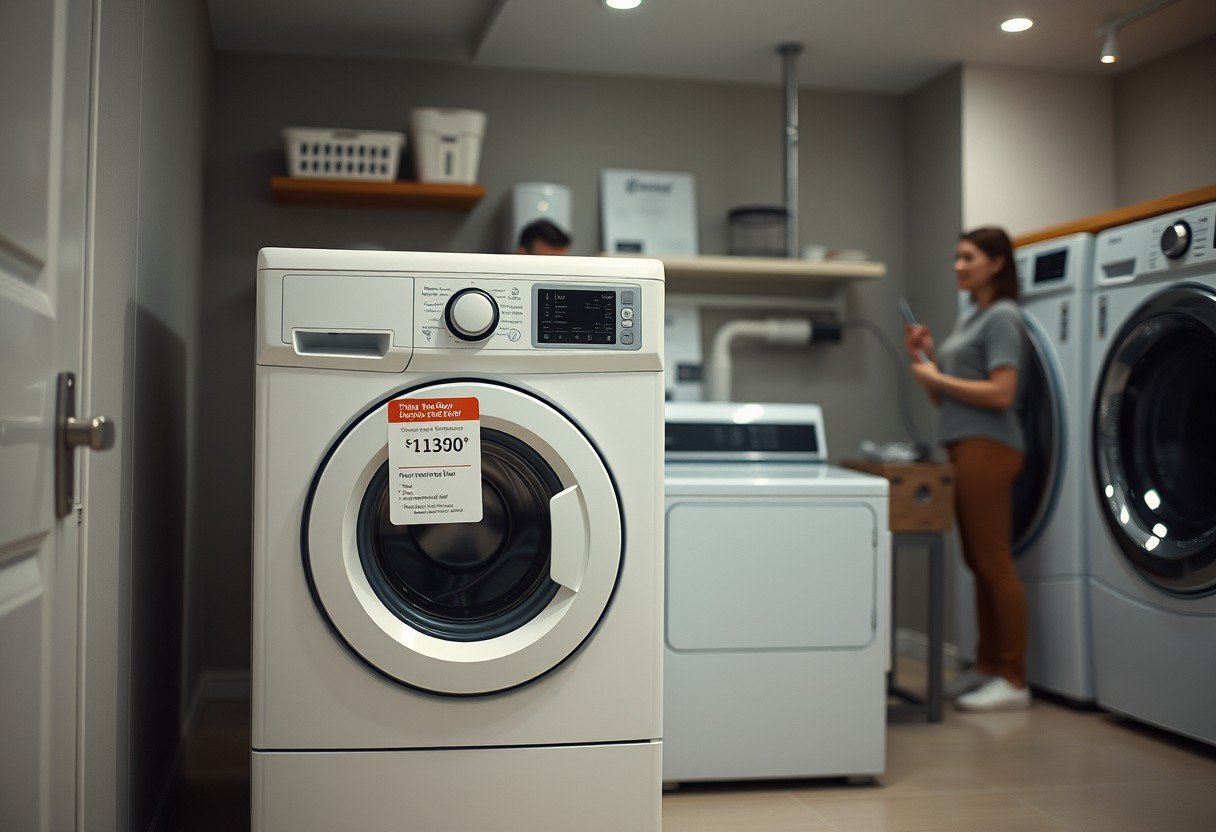When the price of a washing machine drops, it often creates a ripple effect across the appliance market, directly impacting your decision to buy a dryer. This happens because washers and dryers are complementary goods; they work together to complete a task. A lower price on a washer can free up your budget, making a matching dryer seem much more affordable and necessary. This guide explores how these market changes influence consumer behavior and your purchasing choices.
Why Washing Machines and Dryers are a Perfect Pair
The relationship between a washing machine and a dryer is a classic example of complementary goods in economics. This means the use of one product increases the likelihood of using the other. For most households, doing laundry involves both washing and drying, making these two appliances a natural team.
When you buy a new washing machine, especially at a discounted price, you often start thinking about your drying solution. Is your old dryer still a good match? Would a new, more efficient dryer complete the set and improve your laundry routine? This interconnectedness is a key driver of sales.
A price drop for washing machines often leads to an increase in demand for dryers. Consumers see the initial savings as an opportunity to upgrade their entire laundry setup, rather than just one part of it. This psychological link is something retailers and manufacturers count on.
The Ripple Effect of a Price Drop on Your Budget
One of the most direct impacts of a cheaper washing machine is the effect it has on your personal budget. When you spend less than expected on one major appliance, the leftover money can be allocated to another purchase.
This financial breathing room makes buying a dryer a much easier decision. Instead of being a separate, costly investment, it becomes an affordable add-on to the washing machine purchase. This phenomenon is known as the income effect, where increased purchasing power encourages more spending.
For many families, especially first-time homebuyers or those on a tight budget, a sale on a washing machine is the perfect trigger to finally get a complete laundry pair. It turns two large purchases into one manageable expense.
Understanding the Market’s Reaction to Lower Prices
The concept of price elasticity helps explain how sensitive you are to price changes. For appliances like washing machines, a significant price drop can lead to a large increase in the quantity sold. This is because while a washer is a necessity, the timing of the purchase can be flexible.
When washing machine sales surge, it signals a broader trend in the home appliance market. Manufacturers and retailers notice this increased activity and often adjust their strategies. They might start promoting dryers more heavily or create bundled deals to capitalize on the momentum.
This boost in market demand is not just about individual sales. It shows a collective consumer confidence and a willingness to invest in home improvement, which benefits the entire industry.
Short-Term Spike vs. Long-Term Trend in Dryer Sales
The impact of a washing machine price drop on dryer demand can be seen in both the short and long term. Initially, there’s often a quick surge in sales as people who were already planning to buy a washer act on the deal and add a dryer to their cart.
Over the long term, a sustained period of lower washing machine prices can fundamentally change purchasing habits. More households will own a washing machine, which in turn creates a larger base of potential dryer customers down the line. As people integrate the new washer into their lives, the convenience of an accompanying dryer becomes more apparent.
Here is a simple breakdown of the effects over time:
| Timeframe | Impact on Dryer Demand |
|---|---|
| Short-Term (1-3 Months) | Immediate increase in sales, often through bundle deals or impulse buys. |
| Long-Term (6+ Months) | Sustained demand as more households adopt in-home laundry solutions. |
This long-term trend encourages manufacturers to innovate, leading to better and more energy-efficient dryers to attract this growing market.
How Your Personal Preferences Influence the Purchase
While economic factors play a huge role, your personal preferences are just as important. A lower-priced washing machine might be the catalyst, but your final decision to buy a dryer is influenced by several other factors.
Many people prefer to have a matching set of appliances. A new, shiny washing machine can make an old dryer look out of place, pushing you to upgrade for a cohesive look. Brand loyalty also comes into play; if you’ve had a good experience with a certain brand, you’re more likely to buy both appliances from them.
Here are some key factors that guide your decision:
- Energy Efficiency: A desire to save on utility bills can prompt an upgrade to a more efficient dryer.
- Capacity: A larger family might need a larger dryer to match their new high-capacity washer.
- Features and Technology: Smart features, steam cycles, and sensor drying are attractive selling points.
- Space: The physical space available in your laundry room dictates whether you can add or upgrade a dryer.
Ultimately, the decision is a blend of financial opportunity and personal needs. A price drop simply opens the door for you to reconsider what you want and need from your laundry appliances.
Are Bundled Deals the Best Way to Buy?
When washing machine prices fall, retailers often introduce attractive bundled promotions for washer and dryer pairs. These deals can offer significant savings compared to buying each appliance separately, making them a very popular option for consumers.
Buying a bundle ensures that your appliances match in terms of design, capacity, and features. This can create a more functional and aesthetically pleasing laundry room. It also simplifies the shopping process, as you only need to make one purchasing decision.
However, it’s important to do your research. Sometimes, a bundled deal might include a great washer but a mediocre dryer. Always check reviews for both individual units to ensure you’re getting quality across the board. Compare the bundle price to the cost of buying two separately reviewed, high-quality appliances to see where the true value lies.
Frequently Asked Questions
Do lower washing machine prices always increase dryer demand?
Generally, yes. Because they are complementary goods, a price drop in washers makes it more affordable and appealing for consumers to purchase a dryer at the same time, leading to increased demand. However, factors like a poor economy or individual budget constraints can sometimes limit this effect.
What other factors besides price affect dryer sales?
Dryer sales are also influenced by consumer income levels, housing market trends (new homeowners need appliances), energy efficiency ratings, and technological advancements like smart features. A desire for convenience and time-savings is also a major driver.
Are first-time homebuyers more likely to buy a washer and dryer set?
Yes, first-time homebuyers are a key demographic. They are often furnishing an entire home and are highly receptive to bundled deals and sales that allow them to get essential appliances like a washer and dryer pair for a lower overall cost.
How do manufacturers react to these sales trends?
Manufacturers closely monitor sales data. If a drop in washing machine prices successfully boosts dryer sales, they may plan more of these promotions. They also use this information to forecast demand, adjust production levels, and develop new features that encourage bundled purchases.







Leave a Comment